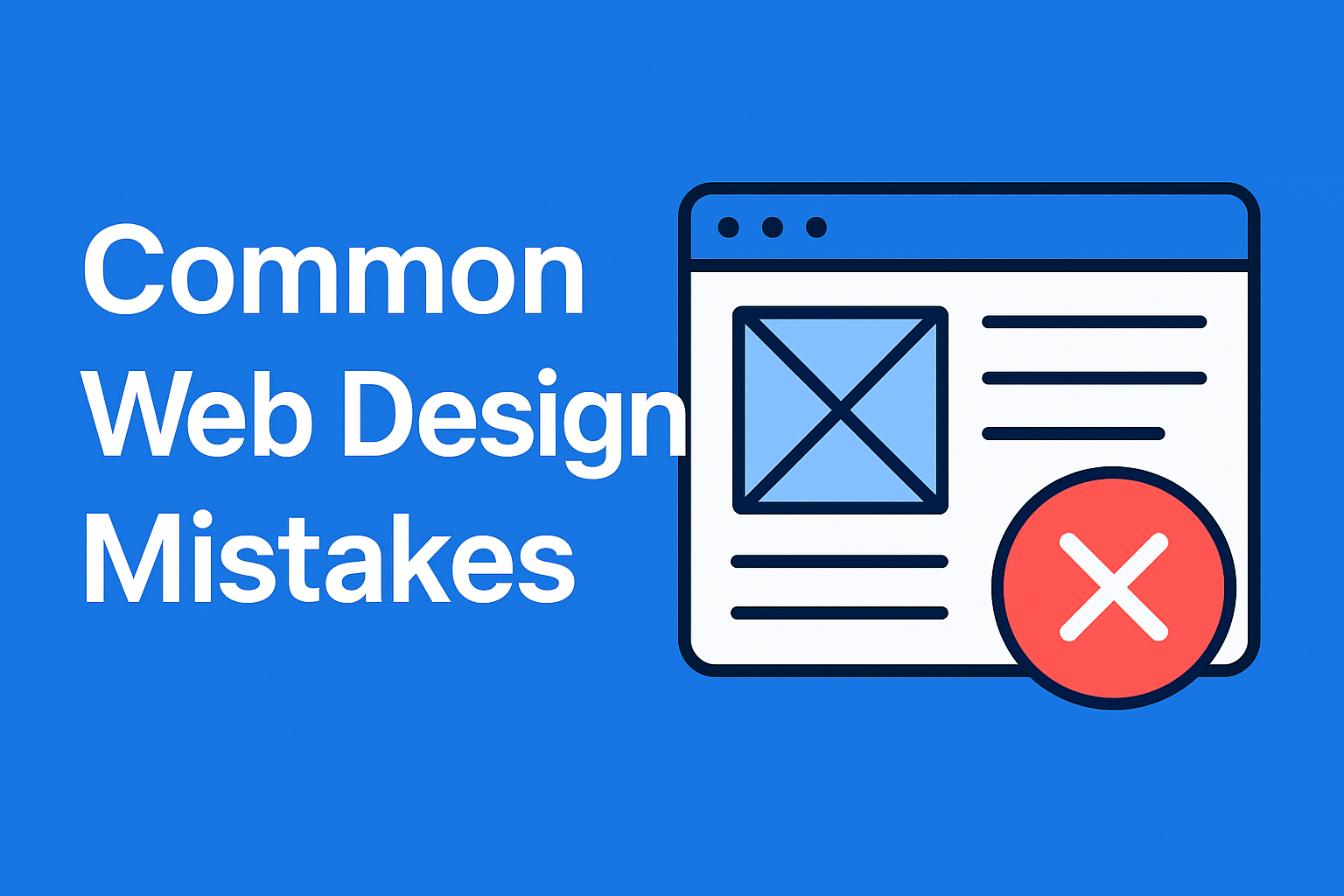Why UX Mistakes Drive Users Away
Did you know that 88% of online consumers are less likely to return to a website after a bad experience (SAGESTER)? Yet, many businesses unknowingly sabotage their own sites with design flaws that frustrate users, kill conversions, and damage brand trust.
From slow load times to confusing navigation, even small UX mistakes can have big consequences. This comprehensive guide reveals:
✔ The 12 most common (and costly) web design mistakes
✔ Real-world examples of sites getting it wrong—and right
✔ Actionable fixes you can implement today
✔ How to test for UX issues before they hurt your business
Whether you’re launching a new site or optimizing an existing one, avoiding these pitfalls will help you create seamless, high-performing experiences that keep users engaged.
Chapter 1: Navigation Nightmares
Mistake #1: Hidden or Overcomplicated Menus
The Problem:
Users shouldn’t need a map to find basic information. Yet, many sites:
- Bury key pages in dropdown labyrinths
- Use vague labels like “Solutions” instead of “Pricing”
- Hide mobile menus behind unmarked hamburger icons
The Fix:
- Limit top-level menu items to 7 or fewer (Amazon uses just 6)
- Label items clearly (“Contact Us” beats “Connect”)
- Test with card sorting to align with user mental models
Case Study:
After simplifying their mega-menu into a clean, prioritized list, HubSpot saw a 27% increase in demo requests.
Chapter 2: Content & Readability Blunders
Mistake #2: Walls of Text
The Problem:
The average user reads just 20% of page content (Nielsen Norman Group). Dense paragraphs:
- Overwhelm visitors
- Hide key information
- Increase bounce rates
The Fix:
- Use the inverted pyramid model: Lead with conclusions
- Break text into chunks: 2-3 sentences per paragraph max
- Add subheadings every 300 words (Like this guide does!)
Mistake #3: Poor Typography
The Problem:
Fancy fonts may look cool, but:
- Light gray text fails WCAG contrast standards
- Script fonts become illegible at small sizes
- Justified text creates “rivers” of white space
The Fix:
- Minimum 16px font size for body text
- High contrast (Black/dark gray on white)
- Stick to 2 fonts max (e.g., one sans-serif for headings, one for body)
Chapter 3: Mobile UX Failures
Mistake #4: Non-Responsive Design
The Problem:
With 60%+ traffic from mobile, sites that aren’t optimized:
- Force pinch-to-zoom navigation
- Have unclickable tiny buttons
- Break layouts on smaller screens
The Fix:
- Adopt mobile-first design
- Test on real devices (Not just emulators)
- Ensure tap targets are ≥48x48px
Tool: Google’s Mobile-Friendly Test
Mistake #5: Intrusive Mobile Pop-Ups
The Problem:
Interstitials that:
- Cover entire screens
- Have hard-to-find close buttons
- Appear instantly before content loads
The Fix:
- Delay pop-ups until scroll depth (e.g., 50% down page)
- Use bottom sheets instead of full-screen takeovers
- Offer real value (Discount code vs. generic newsletter signup)
Chapter 4: Performance & Technical Issues
Mistake #6: Slow Load Times
The Problem:
Every 1-second delay in page load equals:
- 11% fewer page views
- 7% loss in conversions (Akamai)
Common culprits:
- Unoptimized hero images
- Render-blocking JavaScript
- Too many third-party scripts
The Fix:
- Compress images (WebP format)
- Lazy load below-the-fold content
- Use a CDN (Cloudflare, BunnyCDN)
Mistake #7: Broken Links & 404s
The Problem:
Nothing erodes trust faster than hitting dead ends.
The Fix:
- Run monthly broken link checks (Screaming Frog)
- Custom 404 pages with helpful navigation
Chapter 5: Conversion-Killing Design Choices
Mistake #8: Weak CTAs
The Problem:
Vague buttons like:
- “Click Here”
- “Learn More”
- “Submit”
The Fix:
- Action-oriented text: “Get Your Free Trial”
- High-contrast colors: Red/orange convert best
- Strategic placement: Above the fold + end of content
Mistake #9: Form Frustrations
The Problem:
- Too many required fields
- Unclear error messages
- No progress indicators
The Fix:
- Only ask for essential info
- Inline validation (Show errors as users type)
- Multi-step progress bars
Chapter 6: Accessibility Oversights
Mistake #10: Ignoring WCAG Guidelines
The Problem:
Excluding 15% of the global population by:
- Low color contrast
- Missing alt text
- Keyboard navigation traps
The Fix:
- Audit with WAVE
- Add ARIA labels
- Test with screen readers
Chapter 7: Visual Design Pitfalls
Mistake #11: Inconsistent Branding
The Problem:
Mismatched:
- Color schemes
- Button styles
- Typography
The Fix:
- Create a design system
- Document UI patterns
Mistake #12: Autoplaying Media
The Problem:
Videos/sounds that:
- Startle users
- Drain bandwidth
- Can’t be paused
The Fix:
- Mute by default
- Provide clear controls
Conclusion: UX Is a Continuous Process
Great web design isn’t about perfection—it’s about progress. By:
✔ Auditing your site quarterly
✔ Testing with real users
✔ Prioritizing fixes based on impact
…you can systematically eliminate these mistakes and create experiences that convert and delight.
Your Action Plan:
- Run Google Lighthouse audit
- Fix one critical issue today
- Schedule monthly UX reviews

